I'm just saying it wasn't meant for saltwater, because that is exactly what the description on the bag says! If you read the description in the link you posted, it says it is meant for a cichlid tank -- which is freshwater. It also says it works to maintain the pH at a level that cichlids need, which is generally lower than what reef tanks need to be kept at.
If you like black sand, you can buy black reef sand. Reef sand is of a different composition than freshwater tank substrate. Reef sand is wholly aragonite based. Notice the cichlid sand says that it "contains amounts of aragonite" -- the rest of it is lava rock. Lava rock has zero buffering capacity for saltwater tanks. Lava rocks also usually contain heavy metals which leach out into the water, creating a toxic environment for inverts. This would not be a concern in cichlid tanks, as they aren't kept with inverts like the fish in a reef environment are.
That substrate will also make it very difficult (maybe impossible) for you to keep any sand-dwelling livestock, such as sand sifting stars, burrowing fish like gobies, sea cucumbers, nassarius snails, etc. Those animals require a fine sand to survive, and will not do well in the substrate you picked out.
In addition, the particles are large, which makes your substrate at risk for becoming a huge nitrate trap. The particles are large enough to trap detritus and uneaten food, which then rots. Since you probably won't be able to keep a sand-dwelling cleaner crew, there won't be any animals to clean up after this, and your nitrates will probably go up, and without removing and switching out the substrate, you will have no way to lower them.
All I'm telling you is exactly what is written in the description you linked to. I'm not making stuff up. I'm just saying, when I wanted black sand in my tank, I was sure to buy black reef sand that I knew had the same chemical and buffering properties as white reef sand.
If you don't like the look of white sand, fine. A lot of people don't. That doesn't change that right there on the bag of the substrate you bought, it says it's meant for freshwater, not saltwater. That's all I'm pointing out. I find your ultra-defensive attitude quite off-putting, to be honest. I'm not telling you anything that wasn't in that link that you posted, which shows you didn't even read it. If you had read the bag when you bought it, you would know it's for freshwater, not saltwater.
I'm not saying it's going to cause a crash in your tank or anything, just that water parameters such as pH, alkalinity and calcium may be harder to maintain down the road with this substrate, because it doesn't have the capabilities that saltwater substrate has (white or black), and that it may be hard for you to keep inverts long-term with that substrate.
And about your tank skipping a cycle -- all bags of live sand claim that they can eliminate the cycle. That is not unique at all to the bag of substrate you bought.
Why so defensive? No one here wants to see you fail, and we've got nothing to gain from seeing you fail. And, I will add, having a tank up and running for a month and a half so far is not a sure sign that you have done something right. It takes most things a while to slowly die in our tanks if they are going to die, especially if something like lava rock was leaching heavy metals out. That will kill tank inhabitants slowly over several months. So I wouldn't be so cocky if I were you, because the amount of time your tank has been up and running is nothing compared to a lot of tanks on here, and it is really too soon for you to be going off about all these things you've supposedly done right. A month and a half having a tank with a few corals does not make you the expert on substrates. Especially since you didn't even read the bag of the one you bought. And I'm also sorry to say, but montis, xenias and zoas are all considered beginner corals. They are pretty hardy and easy to keep. Montis are the easiest of all SPS corals, in fact. Xenias often spread to weed proportions in people's tanks and grow out of control very easily. You point out that all three of those corals are doing well in your tank. That's fantastic -- they are really pretty corals, and congratulations on having corals do well. But that doesn't mean you are keeping difficult to keep corals at all. They are not hard corals to keep.
Did you know about lava rock, buffering capacity, and leaching heavy metals? Did you know that a lot of animals in this hobby require a fine sand substrate to survive, and using a substrate like that will preclude you from keeping those animals? Did you know that using a chunky substrate like that usually really leads to bad nitrate problems? No? Then you learned something today, and changing your substrate is something you can consider IF you do start to have problems down the road with those things, or IF you decide you want to keep animals that make part of the sandbed their habitat.
You act like I've never seen this before. I have. Lots of people start their tanks with the wrong substrate. Most of them end up having to switch it out because they end up having water quality issues or they realize they can't keep all the animals they want.
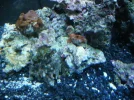 2010_0713sarahs0057.webp73.6 KB · Views: 539
2010_0713sarahs0057.webp73.6 KB · Views: 539 2010_0713sarahs0060.webp68.9 KB · Views: 539
2010_0713sarahs0060.webp68.9 KB · Views: 539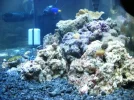 2010_0713sarahs0043.webp67.6 KB · Views: 530
2010_0713sarahs0043.webp67.6 KB · Views: 530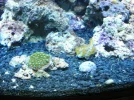 2010_0713sarahs0049.webp77.6 KB · Views: 533
2010_0713sarahs0049.webp77.6 KB · Views: 533 2010_0713sarahs0064.webp52.4 KB · Views: 622
2010_0713sarahs0064.webp52.4 KB · Views: 622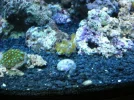 2010_0713sarahs0032.webp67.5 KB · Views: 521
2010_0713sarahs0032.webp67.5 KB · Views: 521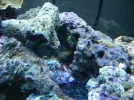 2010_0713sarahs0075.webp58.8 KB · Views: 544
2010_0713sarahs0075.webp58.8 KB · Views: 544